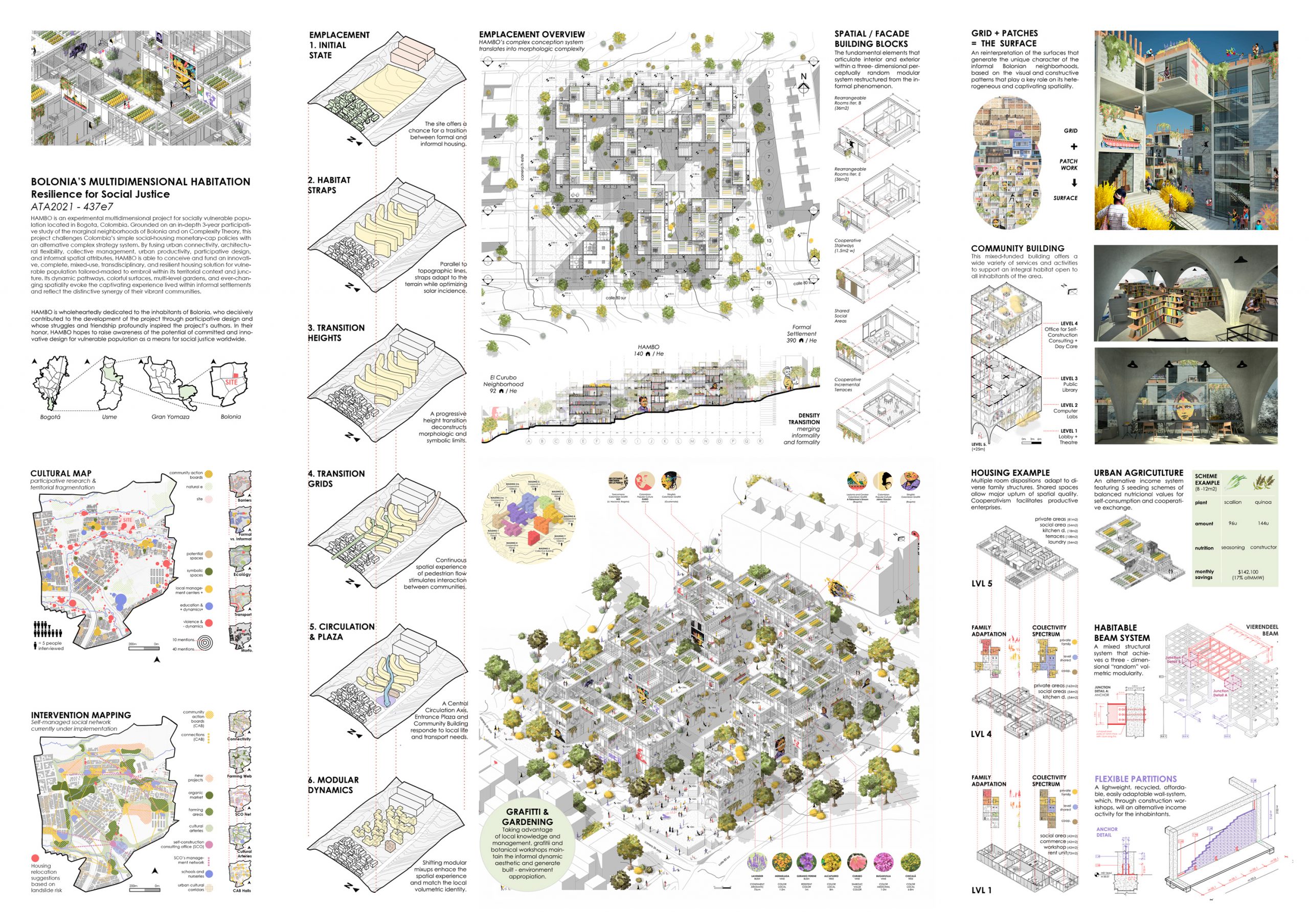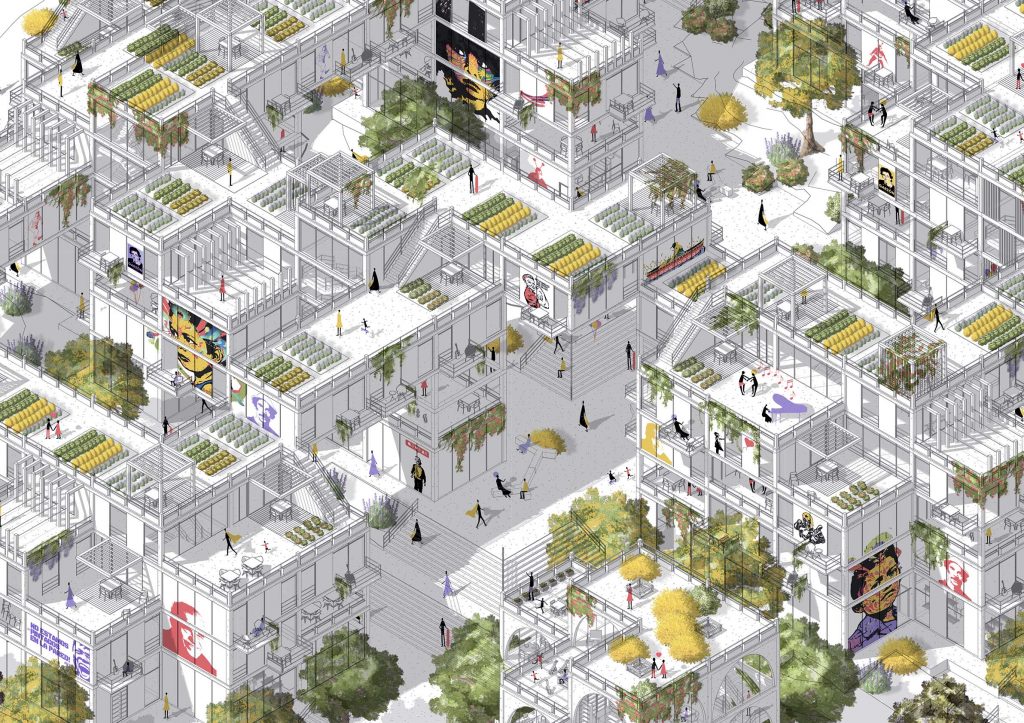HAMBO is a multidimensional project for socially vulnerable population located in Bogota, Colombia. Grounded on Complexity Theory, the project fuses urban connectivity, architectural flexibility, collective management, urban productivity, and participative design to conceive an innovative, site-specific, transdisciplinary, and resilient housing solution that reflects the distinctive synergy of its vibrant local communities.
HAMBO is wholeheartedly dedicated to the inhabitants of Bolonia, who decisively contributed to its development through participative design workshops and whose struggles and friendship profoundly inspired its authors.
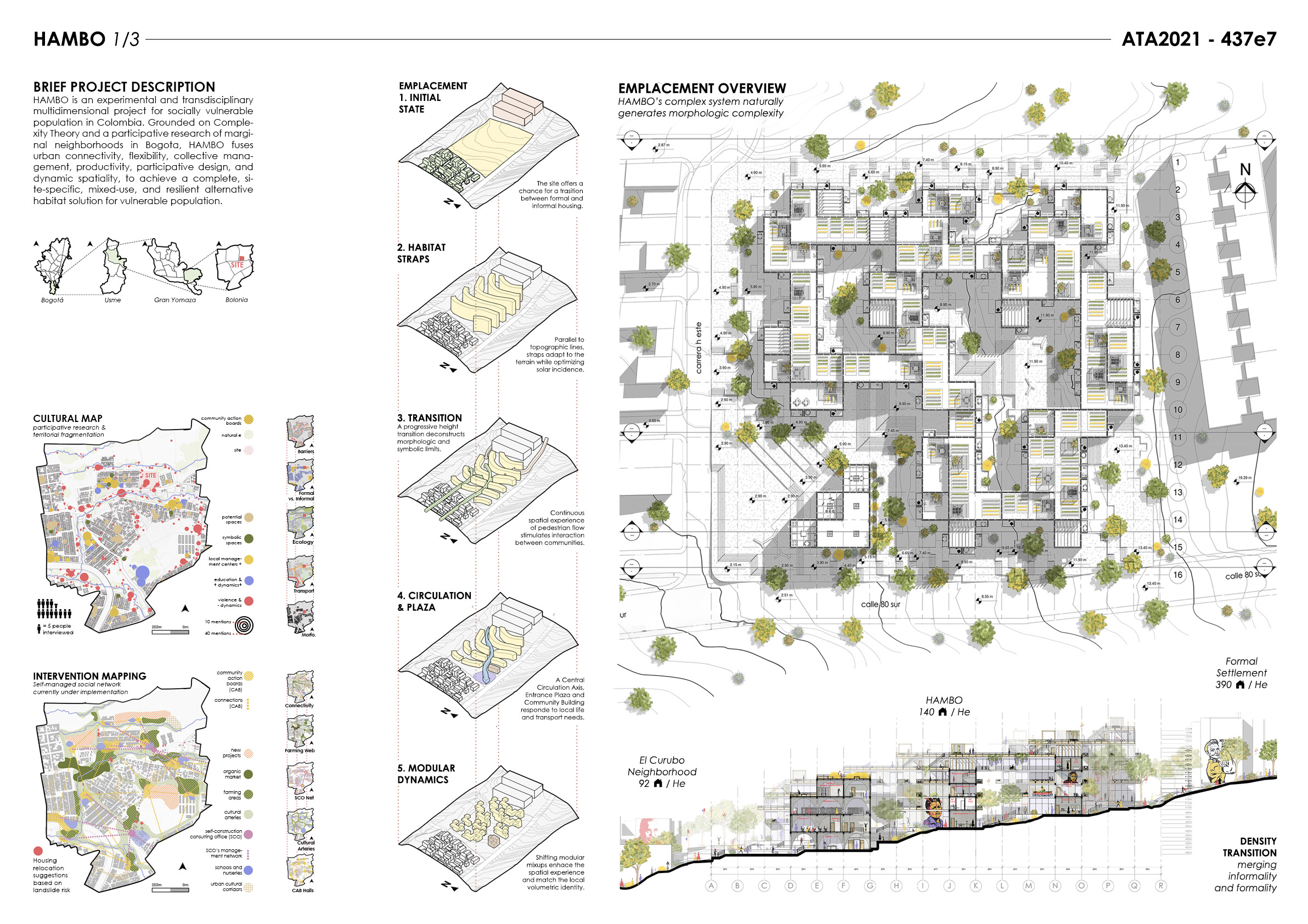
In Colombia, as in other developing countries, rural violence and lack of opportunities generate massive migrations into the cities. Most migrants settle in marginal areas that display multiple habitational deficiencies, exacerbating their social vulnerability in a degenerative cycle that demands an integral habitational alternative. Within such complexity, it is alarmingly ironic how the national social housing policy is structured almost exclusively in simple monetary caps. After all, that simple approach is undoubtedly what triggers deficient and incomplete answers. Therefore, this project is structured by a review of Complexity Theory applied to the concept of habitat. Consequently, the problem is addressed by projecting a novel multidimensional habitat alternative for vulnerable population, and utilizing a cross-scalar transdisciplinary complex strategy system tailored-made for its unique territory. Due to the correlation of diverse habitational deficiencies, the marginal sector Bolonia in Bogota was selected to host the project. The 3 year-long participative territorial research, which featured 8 research tools and 91 diverse informants, demonstrated a distressing territorial fragmentation. In thorough response, HAMBO was designed interrelating 36 strategies within the following transdisciplinary categories: Urban Connectivity, Architectural Flexibility, Collective Management, Urban Productivity, Participative Design, and Dynamic Spatiality.
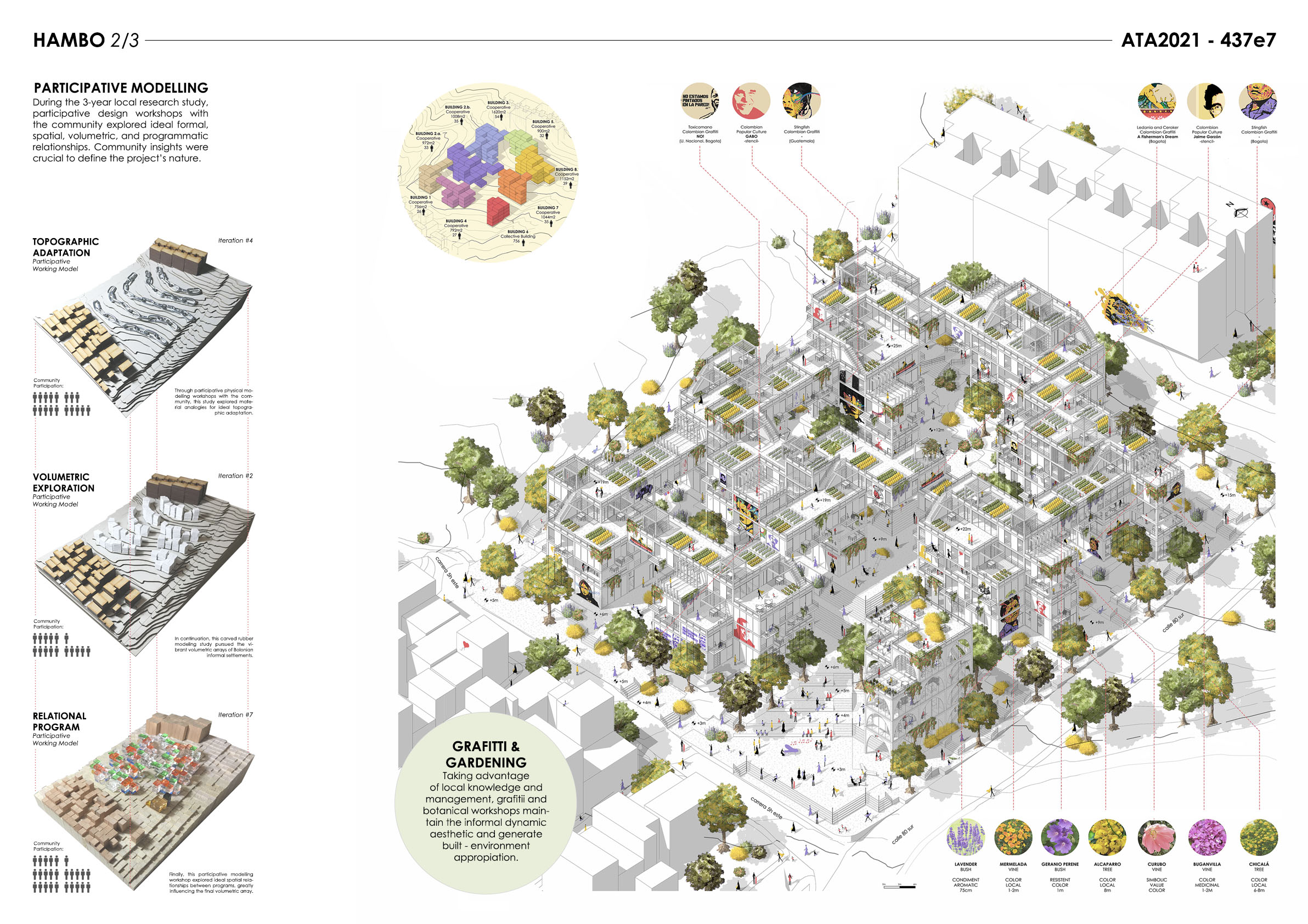
On an urban scale, Urban Connectivity intends primarily to mitigate territorial fragmentation through 6 self-managed social initiatives co-designed with local activists and communities. On the neighborhood scale, 5 cross-category emplacement strategies mitigate fragmentation and other crucial habitational issues, like the Grid Transition Strategy that deconstructs symbolic and physical barriers. Finally, on the architectural scale, HAMBO operates 24 wide-ranging strategies. Within the Collective Management category, the Collective Housing Strategy drastically improves access to higher spatial quality via cooperative space sharing. Then, Architectural Flexibility responds to the changing family structures and needs, featuring the prominent Adaptable Wall System. In addition, the Urban Productivity category focuses on alternative income approaches, like, for instance, the self-consumption and food security system of the Urban Agriculture Strategy. In turn, Participative Design brings forth graffiti and self-construction certificate courses, creating appropriation and exploiting Bolonia’s rich aesthetic legacy. Subsequently, the Dynamic Spatiality category centers on the generation of the vibrant local aesthetic experience. It is essential to understand these strategies as a one organically embroiled cross-scalar system. In the end, the resilience of the whole is what generates a promising and groundbreaking habitational solution for vulnerable populations.
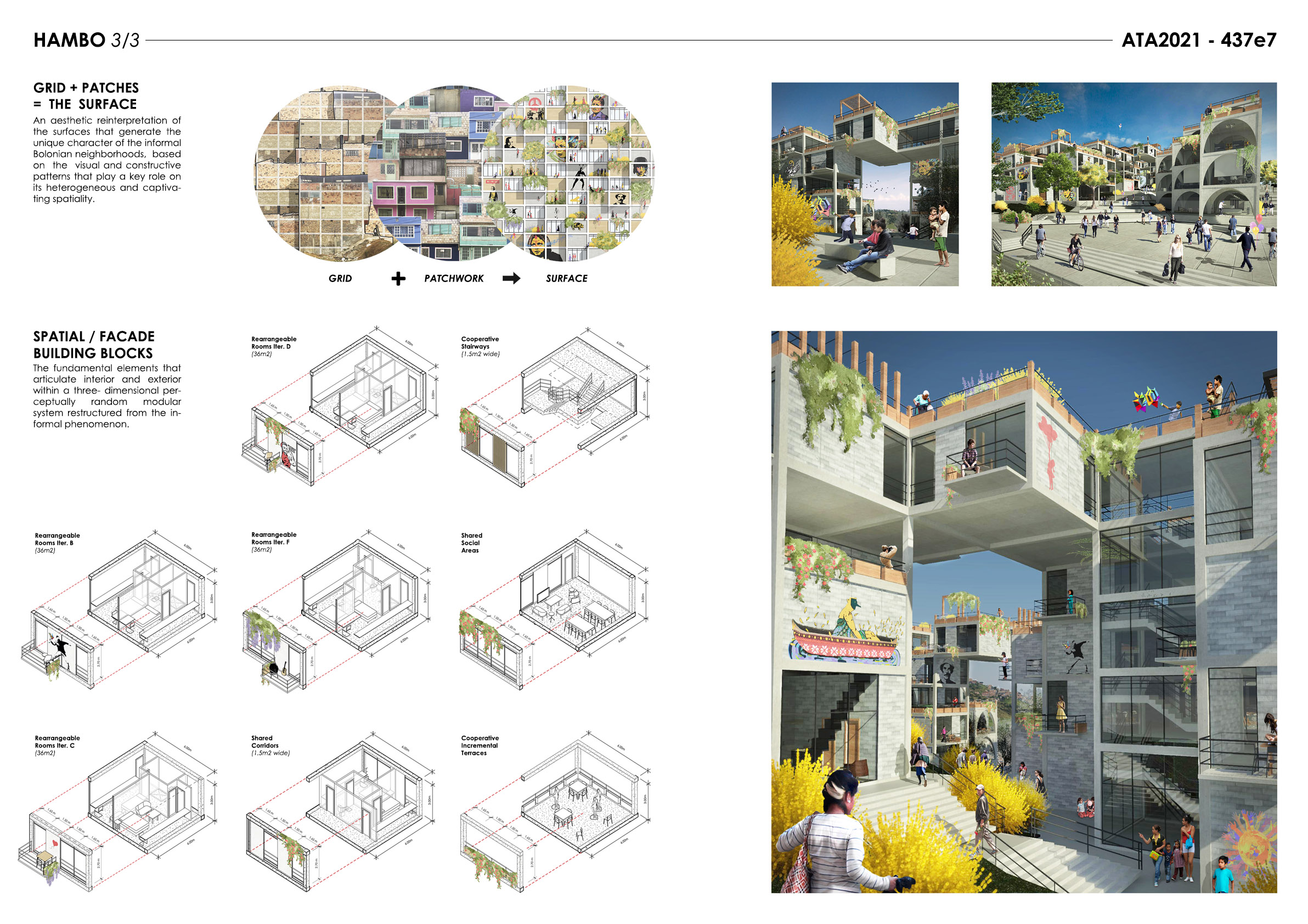
The Board:
